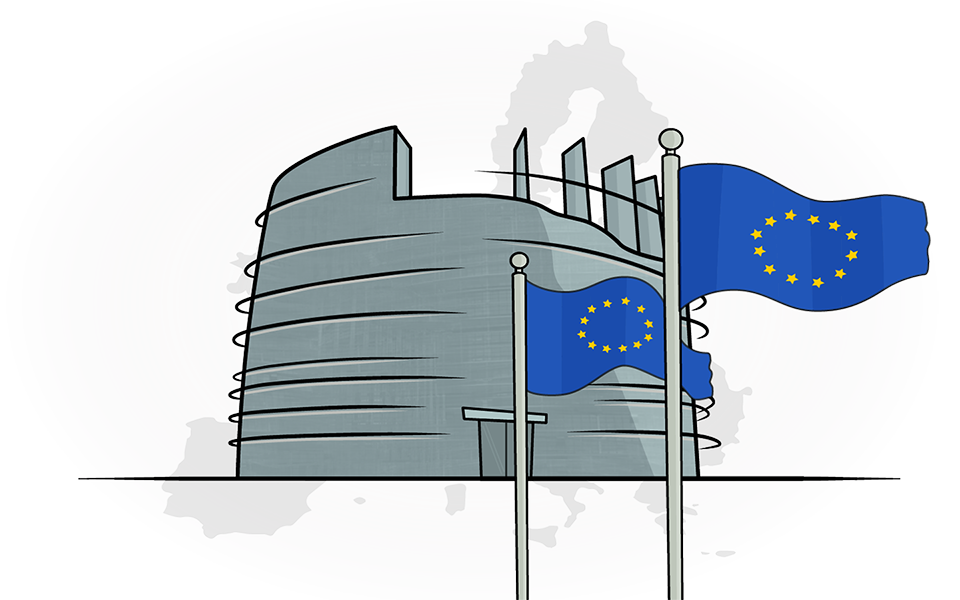What is a clinical trial?
What happens during a clinical trial?
Are there different types of clinical trials?
Are randomized clinical trials better than non-randomized clinical trials?
What are pre-clinical studies?
What are the phases of clinical trials for new drugs?
- Phase I trials – Is it sufficiently safe to proceed?
- Phase II trials – Is there evidence of potential beneficial effects?
- Phase III trials – Is it better?
- Phase IV trials – What else?
Can I continue taking my medications if I decide enrolling in a clinical trial?
Is it true that I may receive a dummy treatment and not even know it?
Can I quit a clinical trial after I have signed the informed consent?
What is a clinical trial?
Clinical trials are research studies that enrol volunteers – both healthy and ill people – in order to test treatments for preventing, detecting, curing diseases, or providing case.
Researchers propose and investigate new and existing treatments, diagnostic and surgical procedures or devices. Clinical trials are the most reliable way for assessing what is effective for patients and at what risks.
What happens during a clinical trial?
In order to address a clinical question, the research team develops a clinical trial protocol combining all the relevant details of the study, which needs the approval of competent authorities, for example an Ethics Review Board. (Watch also the film by ECRAN)
The process depends on what type of clinical trial you might be considering. For example, clinical trials for assessing whether a new treatment should be appropriate, must verify if it works better than what is already in use – the standard treatment – without evidence of unacceptable harm for patients. Nevertheless, any clinical trial involves a research team with doctors, nurses and possibly other health care professionals working closely with patients, besides statisticians and informatics’ specialists who analyse the results of the trial. Studies are conducted in universities, medical centres, clinics, hospitals or doctor’s offices.
If you are interested in enrolling in a clinical trial or you have offered to participate in one, a member of the research team will explain the details and you will have the chance to ask any questions you might have in a one-to-one meeting (see section - (see section). You will be given the information in writing and will need to sign and return a form if you decide to participate (this is informed consent).
If you agreed to participate, trial personnel will check your health, give you specific instructions for participating in the trial, carefully monitor you for any adverse effects and improvements you might experience during the trial, and stay in touch after the trial is completed.
Are there different types of clinical trials?
The most important difference between studies is whether they are interventional or observational.
Interventional trials, as the name itself suggests, need the participants to try a certain type of treatment, to “be tested” under strict and well-defined rules shown in the study protocol. Randomized clinical trials are experimental interventional studies, considered the most reliable designs for obtaining information about treatment effectiveness and safety since they minimize possible confounding factors (bias).
However, doing a randomized clinical trial is not always possible, sometimes for ethical reasons, but in other cases because of costs and the long time required or the type of question the trial is designed to address. Besides, it would take a very long time and would require a very high number of participants to investigate rare adverse events by means of randomized trials.
Observational studies are another way of assessing treatment effects. Participants are “followed” – observed – sometimes over years to understand more about risk factors, possible effects of exposure to certain substances, life styles, etc… Even though they can provide valuable information about everyday practice, potential risk factors or safety issues, observational studies are potentially more subject to bias because participants are not assigned randomly to comparison groups, and their results should be investigated in further clinical trials if feasible.
For example, effectiveness and safety of menopausal hormone therapy has been evaluated for decades with observational studies. Groups of postmenopausal women taking the treatment or not taking it were observed for years by the research teams to assess benefits (control of menopausal symptoms, prevention of cardiovascular diseases, prevention of osteoporosis, prevention of endometrial cancer, etc...) and risks (occurrence of breast cancer, occurrence of cardiovascular disease, etc...).
The results suggested a favourable risk-to-benefit ratio of the treatment.
Only recently, however, (see the paper published on JAMA and the editorial on JAMA, both published in October 2013) randomised clinical trials included in the Women's Health Initiative – and funded by the National Institutes of Health – showed a more complex pattern of benefits and risks.
Comparing the effects of menopausal hormone therapy (oestrogens plus progestins, only oestrogens in women with history of hysterectomy) and those of placebo in very large groups of postmenopausal women (more than 27,000), it was found that risks outweigh benefits (especially with combined treatment with oestrogens plus progestins) mainly because the increased risk of developing coronary heart disease, breast cancer and stroke are not counterbalanced by the reduced risk of developing diabetes, the improvement in menopausal symptoms and general wellbeing.
Depending on the type of questions the research team wants to address clinical trials can be classified as:
Prevention trials: What is the best way to prevent a certain disease in healthy people or to prevent the disease from returning? Possible answers may be drugs, vaccinations or different lifestyles (like diets, exercises, etc…)
Screening programme trials: What is the best way to detect and treat certain diseases or health conditions?
Diagnostic trials: Which tests or procedures are better for diagnosing a particular disease or condition?
Treatment trials: Is a new treatment or surgery/radiotherapy procedure – acceptably safe and effective for a certain disease or condition? Is it better than an alternative treatment or procedure? How can quality of life be improved for patients affected by chronic disease?
Important: ECRAN focuses on interventional clinical trials and especially encourages volunteer participation independent randomized clinical trials (see below).
Are randomized clinical trials better than non-randomized clinical trials?
Yes. Randomized clinical trials are the gold standard of clinical trials, especially when investigating the effectiveness of treatments.
Randomization is an unbiased method for allocating study participants to one of two or more treatment comparison groups. Without unbiased treatment allocation, previous or existing conditions or differences among patients could affect the study results. When only one treatment is under investigation, patients receiving it are in the “active” group, while the others – who receive a dummy treatment, a placebo – are in the “control” group.
These are randomized trials and patients are assigned by chance, like tossing a coin, to one of the treatment comparison groups. (Watch also the film by ECRAN)
When patients in the active and control groups do not know which group they are in –therefore ignoring the treatment they are taking, (the active/new one or the dummy/standard one?) – the study is said to be “single masked (often still referred to as “single blinded”, altough this term is now considered less appropriate). If also the professionals who are administering the treatments do not know who is taking what, the study is “double masked”(again, you will ofet find the term “double blinded” used.
Masking avoids patients and researchers becoming influenced when observing good and negative effects of the treatment. In fact, if you knew you were in the placebo group you would probably dismiss any good or bad effects, whilst if you knew you were in the active group you might report impressions of effects more often. (Watch also the film by ECRAN)
What are pre-clinical studies?
Also known as laboratory studies, these are often the first steps in developing a new drugs treatment before testing it on people. Pre-clinical studies include cell-studies and animal testing.
Developing new treatments is usually a very long process, which can take years: several tests in the laboratory and on animals are necessary before researchers can involve volunteers in a clinical trial of a new drug. Few potential new treatments get to this point and even fewer go through the different phases of clinical trials (see below).
What are the phases of clinical trials for new drugs?
The clinical trial process for testing potential new drugs is very rigorous and usually consists of 4 different phases. Each phase has a different purpose, helps the research team answer different questions about the treatment and implies different risks, and benefits for you.
Clinical trial registers always tell you the active phase for any clinical trial you might be considering.
As already said (see introductive box) the process described below is more typical of new drugs development, but it also applies to any other type of intervention with the opportune differences when discussing doses, placebo, etc… which may not be pertinent.
Phase I trials – Is it sufficiently safe to proceed?
This phase uses low up to therapeutic doses of a new experimental treatment on a small group of people (20–80) in order to evaluate its safety and identify immediate adverse effects.
Phase 1 studies allow finding the highest dose of the new treatment that can be given safely without serious adverse effects. These studies also help to decide on the best way to give the new treatment.
If you are participating to a phase 1 study, you will be initially given a low dose of the treatment and then watched very closely. You might have to spend the night in the hospital. If you experience only minor adverse effects, another few patients may get a higher dose, repeating the same procedure until the researchers identify a dose most likely to be effective with an acceptable level of adverse reactions.
Important: this phase does not identifying rare adverse reactions since it involves only a small number of patients and potentially is the most risky for the participants.
Phase II trials – is there evidence of potential beneficial effects?
In this phase, the new drugs treatment is administered to a larger group of people (100–300) in order to investigate its effectiveness and further evaluate its safety. The researchers look for some evidence that the treatment works – which depend on the goals of the treatment and the type of disease under investigation, for example blood pressure reduction for a new antihypertensive treatment – and keep watching the patients closely for any adverse reaction.
If you are participating to a phase II study, you will be given the same dose of treatment as every other volunteer – the dose that has been chosen after the phase I study – and no placebo or dummy treatment will be used. This phase is more likely to detect potential benefits – if the treatment works! – than phase I. Less common adverse effects should become more evident since the number of participants is larger.
Phase III trials – Is it better?
If a new treatment “passes” phase II, then it is finally tested on large groups of people (typically 1,000-3,000), usually in different research centres. At this point effectiveness and safety are not enough, the new treatment must be to show better than the standard treatment, i.e. it must provide more benefits or less risks for the patients than what is already in use. (Watch also the film by ECRAN)
If you are participating to a phase III trial, you are very likely to be assigned by randomization to one of the two patients’ groups. One group will receive the new treatment while the control group will receive the standard treatment or a placebo. Also, you will probably not be told which treatment you are taking (blinding).
If the results of the study are positive and the research team obtain evidence of effectiveness from two different phases 3 studies, they can than apply for commercialization to the competent authority. In the EU this is the European Medicines Agency, but there are also national agencies for each member state. (Watch also the film by ECRAN)
Important: Giving a placebo is unethical if another beneficial treatment is already known or in use.
Phase IV trials – What else?
Rare and potentially severe adverse effects of a new treatment – but also the effective benefits in the daily clinical practice – are often hard to detects even after the new treatment has been used by thousands of patients. For this reason, researchers keep collecting information about benefits, risks and optimal use after a drug has been approved for commercialization and is available to the public.
If you are participating in a phase IV study it will be very similar to getting treated outside a clinical trial, since the treatment has already been approved and the risks to wich you are exposed are much lower than in other phases.
Important: Always ask your doctor about the risks you might incur by discontinuing your medication or reducing the dosage.
Can I continue taking my medications if I decide to enroll in a clinical trial?
Depending on the protocol (which means the study design, the typology of patients who can partecipate, the questions the study aims to answer, etc…), you might be asked to reduce or possibly discontinue your previous medications for a certain time.
Always ask your doctor which risks you might incur by discontinuing your medication or reducing the dosage.
Important: Clinical trial participants cannot be asked to discontinue any previous medication they might be using.
Is it true that I may receive a dummy treatment and not even know it?
If you are participating to a randomized clinical trial, you will be assigned to one of the treatments cpmparison groups (one of wich maybe a dummy if no other treatment is available).
If the trial is also masked, you will not be told which group you are in. If the trial is double-masked not even the research team will know how wich group participants are in.
(Watch also the film by ECRAN here and here)
Why? Researchers want to reduce the likelihood that people will be influenced by knoledge of wich treatment they are receiving when reporting or observing both adverse effects and improvements.
Can I quit a clinical trial after I signed the informed consent?
The informed consent you sign is not a contract and does not bind you in any way.
Therefore, you have the right to withdraw from a clinical trial anytime and without having to provide any explanation to the research team. Sharing with the researchers any issue you might being experiencing, however, could be helpful and might even solve the problem.
Important: If you decide to withdraw from a clinical trial, make sure you ask the research team or your doctor if it is safe to interrupt the experimental treatment. You might need to gradually reduce the dose or follow other procedures.







